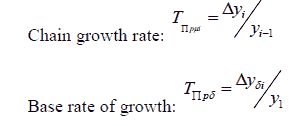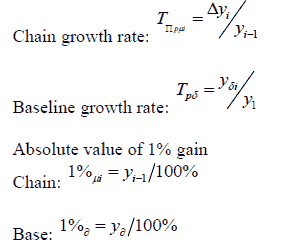Research Article: 2021 Vol: 20 Issue: 2S
Management of Sustainable Development of Tourism in Cross-Border Territories
Madysheva Asem Maratovna, Academy of Labor and Social Relations Moscow
Imangulova Tatyana, Kazakh Academy of sports and Tourism
Khudzhatov Mikail Bekzadaevich, Peoples' Friendship University of Russia
Yeginbayeva Aigul Yessengalievna, L.N. Gumilyov Eurasian National University
Zhaxybekova Dinara, Kazakh Academy of Sports and Tourism
Zhalbinova Saule Kalievna, Kazakhstan branch of Lomonosov Moscow State University
Shakizada Niyazbekova, Financial University under the Government of the Russian Federation, Moscow Witte University
Keywords:
Cross-border Territory, Tourism, Region, Infrastructure, Corridor, Recreational Resources, Destination, Cooperation
Abstract
According to the authors, cross-border tourism in the coming years will have a rigid decline dynamics, this has been proven by cars by calculating static data. However, after the victory over the pandemic and if sanitary and hygienic standards are observed, the development of tourism will receive a new and powerful round of development. The intensification of cross-border cooperation is an important factor in increasing the competitive advantages of tourist regions, which can increase the multiplier effect of concentration of tourist services within cross-border territories, as well as diversify the production of tourist services through the active use of existing differences in natural, cultural, historical and economic conditions. The most common directions for the development of tourism in the transboundary territory of Kazakhstan will be: recreational, cultural and historical, rural and ecological. Thus, the tourism industry has ample opportunities for development and cooperation.
Introduction
Easing and facilitating entry after the Covid-19 pandemic, tourism will revive with renewed vigor and new approaches. Travel has already become one of the basic human needs. According to the professor at the University of Munich Jurgen Schmude (Jürgen Schmude) people will not give up travel. Compliance with these measures all over the world will allow the development of inbound tourism.
Now that coronavirus cases are falling in most countries and the outbreak appears to be under control, many of these isolation measures have been scaled back. The usual trips of tourists to neighboring countries will become available, then the visit to cross-border territories in search of the best recreational resources, service, entertainment, recreation, etc. will increase.
Transboundary territories should be classified as coherent (connected) regions, since their formation is based on connections focused primarily on satisfying the cognitive interest between the territories of different countries, and not on proximity in any way. In other words, Transboundary Territories are based on demand, the mutual interest of the participating countries in cooperation and the development of tourism ties and relations maintained at the state level.
Cross-border cooperation is obviously important for the mutual strengthening of the tourism industry in neighboring countries. The specificity of cooperation in the field of cross-border tourism should be considered with great care and with an understanding of fundamental concepts. For example, it should be clear that cooperation agreements in tourism planning entail very close contact with all stakeholders, both public and private, as well as with the multitude of industries that are involved in tourism planning. Such cooperation can lead to effective dialogue and negotiations with a view to creating mutually acceptable interests and sending proposals for the development of tourism in the region.
Cross-border cooperation in the field of tourism is joint administrative, technical, economic and cultural measures to strengthen and develop good-neighborly cooperation between neighboring states and the conclusion of relevant agreements in order to resolve problems that may arise in the tourism sector. For these purposes, a large number of meetings, seminars, international tourism exhibitions, conferences with the participation of representatives of the tourism and hospitality industry are held, exchange internships for specialists in the field of tourism, advertising tours are organized, new joint tourist routes are being developed, information, advertising and other materials are exchanged for the purpose of informing the parties about the available tourist routes. Such events allow neighbors to develop strong business relations, cooperation, create joint projects in the field of tourism, promote familiarization with the culture, traditions, values of neighboring countries, and as a result, improve mutual understanding, and, of course, develop the economy, which in turn also leads to creation of programs for sustainable development of cross-border areas.
Literature Review
This study was conducted taking into account the experience of the World Tourism Organization (UNWTO), which is a specialized agency of the United Nations for tourism, in order to develop tourism in the transboundary territories of Kazakhstan. The views expressed in this publication express the opinion of foreign authors who have a certain experience in the development of transboundary territories.
Methodology
The study of the development of transboundary territories is an urgent and complex problem of the economy and geography of neighboring countries, since at present there is no clearly developed methodology for studying such objects, but there are only sectoral approaches. The analysis of transboundary territories with their own specific set of relations should be based on a systematic approach that makes it possible to study geographic objects with a variety of intrasystem and extra-system connections. From the point of view of a systematic approach, the object of study is a set of transboundary territories. In addition, the study of cross-border areas is possible due to the complexity of the study. The article presents current trends in the study of transboundary objects and processes, highlights the main approaches to the study of transboundary territories. The authors of the article note that, taking into account the complexity and diversity of aspects of the study of transboundary territories, the diversity of studies that reveal both the genesis of natural complexes and the stability of tourism, as well as socio-economic factors that affect the development and transformation of natural objects, the formation of various landscape and ecological situations.
Case Studies
Cross-border territories have a special place in the development of tourism. So, under favorable conditions, they stimulate the development of tourism activities in neighboring countries. Tourism has been and will be one of the promising forms of successful cooperation between neighboring powers. So, as it contributes to the emergence of strong business relations, the creation of joint projects in various spheres of life of the population. Cross-border tourism is transforming infrastructure and related industries. in addition, it provides budget revenues, that is, the development of the economy and serves as the basis for familiarizing with the culture, traditions, values of neighboring countries.
The main problem of the economic policy of Kazakhstan is overcoming the raw materials orientation. The main share in the structure of the economy of the extractive industries, that is, about 80% of which are raw materials. This structure of production significantly increases the economic dependence of the republic on external factors.
In order to quickly transform Kazakhstan from a raw material economy to a country that produces finished goods and services based on the principles of sustainable development, it is necessary to urgently reorient the economic policy and strategy of the republic’s economic development towards a reasonable limited framework for the development of extractive industries and to stimulate the growth of more modern manufacturing industries, as well as sustainable development tourism.
At present, the economy of the Republic of Kazakhstan is largely integrated into the world economic system and is dependent on the world situation, especially the markets of the CIS border countries. At the same time, Russia gained a more favorable position in this integration, that is, within the framework of the EurAsEC, customs duties were removed, which led to significant losses in the budget of Kazakhstan.
Due to the current circumstances, Kazakhstanis need to take steps towards the needs that have arisen on the borders of the neighboring country. In this case, this aspect is tourism, since Kazakhstan has rich recreational resources, which means tourism is an industry that must be used as a means of enriching the country's economy, without forgetting about the environmental parameters of development.
However, the development of border areas requires a full-fledged infrastructure is needed, and first of all, car roads.
In Kazakhstan, for most of the settlements in the regions, highways are the only means of communication, thanks to which goods, construction and agro-industrial goods are received, products are exported, and passenger traffic is carried out. In market conditions, the factors of acceleration of cargo delivery and their safety are becoming especially important. In this regard, shippers, especially in the private sector, began to shift to road transport not only in the zone of close distances (up to 300 km), but also at long distances (1500 km-2000 km). With the development of industrial and agricultural production, tourism, small and medium-sized businesses, interregional transportation are increasing, that is, connection with neighboring countries are being established.
The length of highways in the Republic of Kazakhstan is 128,3 thousand km, of which more than 97,4 thousand km are public roads, including 23,5 thousand km of national significance and 73,9 thousand km of regional and district significance. According to the World Bank, the current cost of the national road network is approximately US $ 109,7 billion or 54% of GDP.
In this case, Kazakhstan will have to take the most losing positions, so after joining the EAEU, partners began to import more goods to Kazakhstan, and our country - to send less abroad. Thus, 8696.3 million of US dollars goods are imported from Russia and from Kazakhstan to Russia only 3.549.4 million of US dollars, while the indicator of Kazakhstan's exports decreases annually. If the PRC builds roads and establishes the movement of highways along the Great Silk Road, then the Republic of Kazakhstan will completely become a country with a raw material economy, since the manufacturing industry will not withstand competition from Chinese manufacturers.
That is why the authors see that tourism is a lifeline for the economy of Kazakhstan, since it has the most beautiful recreational attractions, accordingly, the calculation of the development of tourism in the border areas with Russia is one of the most relevant topics for Kazakhstan, because the adjacent regions are already in demand among Russian tourists. Prospects of the development of cross-border cooperation in tourism can be successful if Russia and the Republic of Kazakhstan themselves build infrastructure in the border regions, however, given that under the EAEU profit increase was observed only in Russia, it is necessary for Russia to develop infrastructure, as a sign of good neighborly relationships. Unfortunately, Russia has developed a consumer attitude towards Kazakhstan.
A tourist region in its simplest terms is a special geographic region in which the visitor enjoys various types of travel. Let's consider the factors influencing the socio-economic development of border region as shows in Table 1.
| Table 1 Factors Influencing the Socio-Economic Development of Border Regions |
|
|---|---|
| Group of Factors | Specific Factors |
| External | political factors |
| macroeconomic factors | |
| technological factors | |
| socio-political changes | |
| Internal | geographical position |
| natural and climatic conditions | |
| resource potential | |
| political conditions | |
| scientific and production factors | |
| investment potential | |
| financial infrastructure | |
| transport infrastructure | |
| information infrastructure | |
| social infrastructure | |
| the effectiveness of regional management and territorial planning | |
| Border- related | peripherality and borderline |
| industry specialization | |
| border infrastructure | |
| demographic situation | |
| forms of cross-border cooporation | |
The main component of cross-border cooperation is the process of creating ties and contractual relations in the borderlands in order to solve common issues and problems for these countries.
Thus, a cross-border tourist territory is a territorial entity consisting of two or more neighboring or closely spaced countries (or regions of these countries) that have a mutual interest and desire for the development of international tourism, the creation of a single tourist product and realizing the prerequisites for a closer exchange tourists in comparison with other countries or areas.
In Kazakhstan, as a result of a survey of 100 respondents, 33 percent of respondents do not give up their thoughts about travel. They monitor the situation every day, waiting for the world to open its borders again. Nevertheless, 20% of residents of Kazakhstan over 18 years old answered "no", that is, they will not give up traveling, 22% - "probably not" will not give up, at the same time 18% said they would refuse, and another 21% - rather will refuse. Thus, the respondents were divided almost equally, while 19% found it difficult to answer and, that is, they can lean either one way or the other. Of those surveyed, 56% have already suffered the Covid-19 viral disease and are confident that the danger has passed. 27% agree to travel after being vaccinated against a pandemic. When asked which of the neighboring countries they prefer for travel after easing and facilitating the entry of tourists, Kazakhstani respondents answered that 21% want to visit the Kyrgyz Republic, Uzbekistan 17%, Russia 13%, Georgia 7%, Azerbaijan 5%, Turkmenistan 5%, the rest would visit other countries, subject to the relaxation of the visa regime or the introduction of multiple entry visas.
It is possible to predict what the absolute increase in tourists from Kazakhstan to Russia will be, taking into account the crisis as a result of the Covid-19 pandemic, using statistical indicators of dynamics.
Calculation Method
To calculate the indicators of dynamics on a permanent basis, each level of the series is compared with the same baseline. The indicators calculated in this case are called basic.
To calculate the indicators of dynamics on a variable basis, each subsequent level of the series is compared with the previous one. The dynamics indicators calculated in this way are called chain indicators.
The most important statistical indicator of the dynamics is the absolute growth, which is determined in the difference comparison of the two levels of a number of dynamics in the units of the initial information.
Absolute Gain

Growth rates characterize absolute growth in relative terms. The growth rate calculated as a percentage shows how many percent the compared level has changed from the level taken as the comparison base.
Rate of Increase

Growth rate is a common statistical indicator of dynamics. It characterizes the ratio of the two levels of the series and can be expressed as a coefficient or as a percentage.
Growth rate

Rate of Build-Up
An important statistical indicator of the dynamics of socio-economic processes is the rate of growth, which, under conditions of intensification of the economy, measures the growth of economic potential over time as shows in Table 2.

| Table 2 Chain in Indicators of a Number of Dynamics |
||||||
|---|---|---|---|---|---|---|
| Period | Tourists, people | Absolute gain | Growth rate,% | Rates of growth, % | Absolute content of 1% gain | Growth rate,% |
| 2014 | 2859000 | - | - | 100 | - | 0 |
| 2015 | 3889000 | 1030000 | 36.03 | 136.03 | 28590 | 36.03 |
| 2016 | 4520000 | 631000 | 16.23 | 116.23 | 38890 | 22.07 |
| 2017 | 5474000 | 954000 | 21.11 | 121.11 | 45200 | 33.37 |
| 2018 | 5611000 | 137000 | 2.5 | 102.5 | 54740 | 4.79 |
| 2019 | 6400000 | 789000 | 14.06 | 114.06 | 56110 | 27.6 |
| 2020 | 1800000 | -4600000 | -71.88 | 28.13 | 64000 | -160.9 |
| Total | 30553000 | |||||
In 2020, compared to 2019, the number of tourists decreased by 4,600,000 people, or 71.9%.
The maximum increase is observed in 2015 (1,030,000 people).
The minimum increase was recorded in 2020 (-4600000 people).
The rate of increase shows that the trend is increasing, which indicates the acceleration of tourists as shows in Table 3.
| Table 3 Basic Indicators of a Number of Dynamics |
||||
|---|---|---|---|---|
| Period | Tourists, people | Absolute gain | Growth rate,% | Rates of growth, % |
| 2014 | 2859000 | - | - | 100 |
| 2015 | 3889000 | 1030000 | 36.03 | 136.03 |
| 2016 | 4520000 | 1661000 | 58.1 | 158.1 |
| 2017 | 5474000 | 2615000 | 91.47 | 191.47 |
| 2018 | 5611000 | 2752000 | 96.26 | 196.26 |
| 2019 | 6400000 | 3541000 | 123.85 | 223.85 |
| 2020 | 1800000 | -1059000 | -37.04 | 62.96 |
| Total | 3055300 | |||
In 2020, compared to 2014, the number of tourists decreased by 1059,000 people, or 37%. Calculation of the average characteristics of the rows.
The average level of the series y of the dynamics characterizes the typical value of the absolute levels.
The average level of the interval series is calculated by the formula

The average value of tourists from 2014 to 2020 was 4,364,714.29 people Average growth rate

On average for the entire period, the growth of the analyzed indicator amounted to 0.9258 Average growth rate

The average number of tourists decreased by 7.4% annually.
Average absolute growth is a generalized characteristic of individual absolute increases in a number of dynamics.
Average absolute growth.

Due to the Covid-19 pandemic, every year tourists from Kazakhstan to Russia will, on average, decrease by 176,500 people.
We have made a forecast one step ahead using the absolute growth rate.
y(8)=1800000-176500=1623500
Due to the Covid-19 pandemic, every year tourists from Kazakhstan to Russia will, on average, decrease by 176,500 people.
We have made a forecast one step ahead using the absolute growth rate.
33% more tourists come to Kazakhstan from Russia, although the population of Russians is 10 times larger, or 130 million people.
So far, there are very few people traveling abroad all over the world, however, open borders in the CIS space, the absence of a language barrier and the usual destinations of neighboring countries will allow resuming tourism to cross-border territories.
In general, the tourism potential of the Republic of Kazakhstan has the prospect of improving economic indicators due to cross-border territories, the number of tourist arrivals, a favorable geographical position, a vast territory that is rich in large reserves of minerals, cultural and historical heritage, excellent national cuisine that can attract tourists. However, a number of problems need to be addressed as shows in Table 4.
| Table 4 Problems of Tourism Development in the Transboundary Territories of Kazakhstan and Ways to Solve Them. |
|
|---|---|
| Problem | Decision |
| High cost of travel services Insufficient paying capacity of the population | Development of proposals for different target audiences |
| Lack of highly qualified personnel | The predominant recruitment of personnel with special education, as well as practical skills in this area |
| Lack of service focused on the characteristics of a particular tourist | Development of programs aimed at organizing services taking into account national tourist preferences |
| Not enough joint tours | Development of cross-border tourism, as well as joint routes |
| Poor awareness of the population of countries about the tourist offer of a neighboring state | Information tours, fairs, exhibitions, conferences |
| Lack of established links between tourism organizations of partner countries | Creation of a special governing body regulating the activities of tourism organizations |
| Low level of mutual tourist flows, as well as a low share of tourism income in the country's GDP | Creation of a single tourist space by creating common routes, cross-border regions and other forms of interaction in tourism |
The growing influence of tourist flows on the development of cross-border regions of the country is also evidenced by the fact that, according to statistics, a significant part of travel is carried out within neighboring regions.
Another factor in the development of tourism in cross-border areas is shopping, as well as the well-known effect of “price discrimination” in the economy, when different prices are offered for the same product in different places. Tourists are attracted to the border area by duty-free trade, a large selection of goods, lower prices, and convenient opening hours. Cross-border trade in these areas greatly contributes to the development of tourism, which in turn has a significant impact on the development of local infrastructure.
When developing and implementing such cross-border tourist plans, special attention must be paid to the formation of a competitive tourist product with the fullest possible use of all resource opportunities of the territory and competently selected and submitted information, taking into account the social, aesthetic and cognitive needs, as well as national characteristics of tourists from neighboring states.
To turn the territory into a competitive cross-border tourist region, it is advisable to solve the following tasks:
• To develop an agreed Strategy for the development of transboundary territories and establish the state of measures taken in these countries to preserve and develop natural and cultural heritage.
• To develop recommendations for the preservation and development of natural and cultural heritage in each of the countries;
• Determine the entities responsible for the implementation of the joint strategy, establish their areas of responsibility and outline a plan for the implementation of the Strategy's activities.
• It is necessary to search for new forms of cross-border cooperation, their approbation and widespread introduction, including outside the region. It is required to identify the possibilities of managing cross-border tourist regions.
• To improve the situation of tourism development on the borderlands, it is advisable to carry out the following practical measures:
• ensure compliance with environmental standards and activities within the framework of environmental policy in the tourism sector, regardless of the size of a particular enterprise or type of tourism and recreation activities;
• Ensure proper management of activities in the tourism and recreation sector in protected areas such as natural national, landscape and other parks, as well as in other protected areas;
• It is advisable to plan the development of other types of economic activity (for example, agriculture) so that they do not lead to the destruction and degradation of tourist and recreational resources that are important for the tourism industry;
• To ensure the development of such basic infrastructure facilities as the road network, water supply system, which will help meet the needs of not only the tourism industry, but also other areas of the region;
• Improve the quality of services provided, especially in relation to other coastal regions;
• Take measures to mitigate the effects of the seasonal nature of tourism activities by creating employment opportunities during periods of low activity in places of visit that are heavily dependent on tourism;
• Ensure widespread understanding of the economic benefits of tourism among the local population so that residents have a deep interest in preserving the resource base of the tourism industry.
• Thus, it is too early to identify the prospects for the development of cross-border cooperation in the field of tourism, as no one in the world has yet won a victory over the Covid-19 pandemic.
Conclusion
Nevertheless, tourism will be welcome for everyone and in demand, provided that sanitary and hygienic standards are observed.
Prospects for the development of cross-border cooperation in the field of tourism can be successful, especially in regions with high potential for the development of recreational and local history tourism. Cross-border cooperation in border areas in the field of tourism will contribute to improving their image, deepening direct partnerships between tourism enterprises and organizations of border regions and the country as a whole, studying and implementing the experience of other states in the field of regional regulation and stimulating the industry, establishing contacts with foreign missions, public organizations, etc. A tourist region in its simplest terms is a special geographic region in which the visitor enjoys various types of travel.
Contrast of natural, cultural and economic factors: cross-border shopping, the effect of “price discrimination” and the contrast of natural resources and geosystems, as well as cultural characteristics and differences.
"This paper has been supported by the RUDN University Strategic Academic Leadership Program"
References
- Timothy, D.J. (2008). Relationships between Tourism and International Boundaries Tourism and borders: Contemporary issues, policies and international research. New direction in tourim analysis H. Wachowiak (ed.) Burlington: Ashgate.
- UNWTO. (2018). World Tourism Barometer. 16(3)
- World Bank Group. (2018). Global Economic Prospects. Washington, DC.
- UNWTO & Global Tourism Economy Research Centre. (2018). Asia and the pacific grows in importance for global tourism.
- Butler, R.W. (1996). The development of tourism in frontier regions: Issues and approaches in Shaul Krakover, Y Gradus. Tourism in frontier areas. — United States: Lexington Books.
- Tleuzhanova, D., & Berstembayeva, R. (2017). Features and problems of attracting investments into agriculture of Kazakhstan. Journal of Advanced Research in Law and Economics, 8(4), 1255–1259.
- Maisigova, L.A., Niyazbekova S.U., Isayeva, B.K., & Dzholdosheva, T.Y. (2021). Features of relations between government authorities, business, and civil society in the digital economy. In: Popkova E.G., Ostrovskaya V.N., Bogoviz A.V. (eds) Socio-economic Systems: Paradigms for the Future. Studies in Systems, Decision and Control, 314.
- Niyazbekova, Sh.U., Grekov, I.E., & Blokhina, T.K. (2016). The influence of macroeconomic factors to the dynamics of stock exchange in the Republic of Kazakhstan. Economy of region, 12(4), 1263-1273.
- Baigireyeva, Z., Niyazbekova, S.U., Butkenova, A.K., & Baidalinova, A.S. (2021). Analysis of the Existing Human Capital Development Monitoring System. In: Popkova E.G., Sergi B.S. (eds) "Smart Technologies" for Society, State and Economy. ISC 2020. Lecture Notes in Networks and Systems, 155.
- Dogaov, A.N., Sadvokasova, K.Z., Turebekova, B.O, & Doshan. (2014). A.S Innovation, investing, economics and tourism. Life Science Journal, 11(SPEC. ISSUE 11), 550–555.
- Esbergenova, L., Makisheva, Z., & Kishibekova, (2016). G. Trends of the agriculture development in the republic of Kazakhstan. International Journal of Economic Perspectives, 10(4), 206–212.